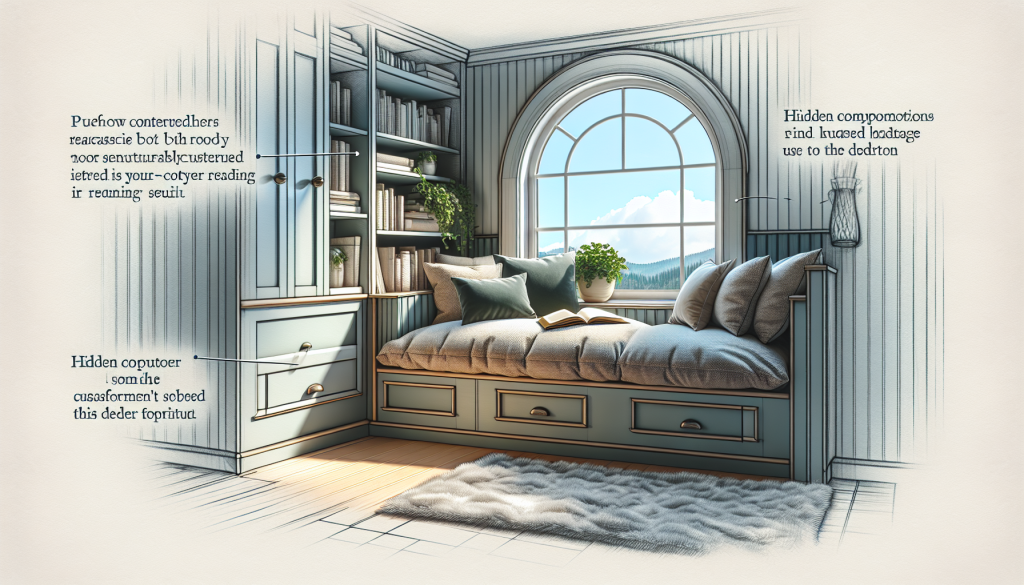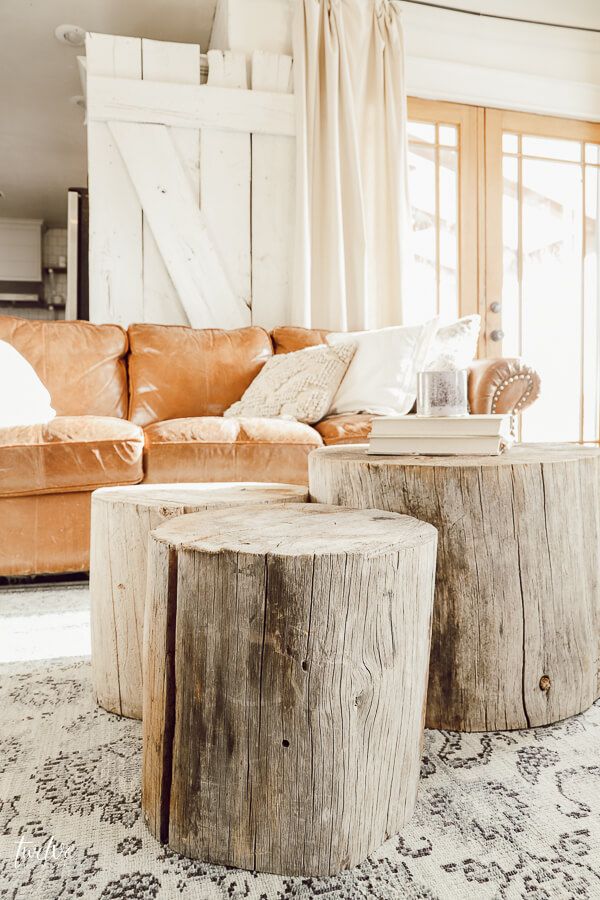Imagine transforming your bedroom into a cozy oasis with a charming DIY window seat that not only adds a touch of style to the room but also provides a practical storage solution. Say goodbye to clutter and hello to a peaceful and organized sanctuary. In this article, we will guide you on how to create a beautiful window seat with storage all on your own, allowing you to showcase your creativity and enjoy the comfort and functionality of this delightful addition to your bedroom.
Table of Contents
ToggleChoosing the Right Window
Consider the size and shape of the window
When choosing a window for your DIY window seat, it’s important to consider the size and shape. A window that is too small might limit the size of your seat, while a window that is too large might be difficult to work with. Take measurements of the window opening to ensure that your seat will fit properly.
Evaluate the natural light and view
Another important factor to consider is the natural light and view from the window. Do you want your window seat to overlook a beautiful garden or a scenic view? Or do you prefer a window with more privacy? Consider the direction in which the window faces and think about how the natural light will enter the room.
Check for any obstructions
Before finalizing your decision, make sure to check for any obstructions around the window. Are there any radiators, vents, or outlets that might be in the way? It’s important to have a clear space for your window seat, so take note of any potential obstacles and plan accordingly.
Measuring and Designing the Window Seat
Measure the dimensions of the window
To create a window seat that fits perfectly in your space, it’s essential to take accurate measurements of the window. Measure the width and height of the window opening, as well as the depth from the wall to the edge of the window. These measurements will help guide you in designing the size of your seat.
Determine the ideal seat height and depth
Once you have the measurements of the window, it’s time to determine the ideal seat height and depth. Consider how you plan to use the window seat. Will it be primarily for seating or also for lounging? Measure the height of a chair or sofa that feels comfortable to you and use that as a guide for the seat height. For the depth, allow enough space for you to sit comfortably without feeling cramped.
Decide on the design and style of the window seat
With the measurements and seat dimensions in mind, it’s time to decide on the design and style of your window seat. Consider the overall aesthetic of your bedroom and choose a style that complements it. Do you prefer a modern, minimalist look or a cozy and rustic feel? Look for inspiration online or in home decor magazines to find a design that speaks to you.
Gathering Materials and Tools
Choose suitable lumber for the seat and frame
When it comes to the materials for your DIY window seat, it’s important to choose suitable lumber for the seat and frame. Opt for sturdy and durable wood that can support the weight of people sitting on it. Popular choices include pine, oak, or plywood. Make sure to select boards that are of the appropriate length and thickness for your design.
Select appropriate hardware and screws
To ensure the stability and durability of your window seat, it’s crucial to select appropriate hardware and screws. Choose high-quality screws that are the right length for the thickness of the lumber you’re using. Additionally, consider using brackets and other hardware to reinforce the frame and provide extra support where needed.
Gather necessary tools such as a circular saw, drill, and measuring tape
Before you start building your window seat, gather all the necessary tools. This may include a circular saw for cutting the lumber, a drill for screwing in the screws, and a measuring tape for taking accurate measurements. Other tools you might need include a level to ensure straight lines and a sander to smooth out rough edges.
Building the Window Seat Frame
Cut the lumber according to the measurements
Once you’ve gathered all the materials and tools, it’s time to start building the window seat frame. Begin by cutting the lumber according to the measurements you took earlier. Use a circular saw or a handheld saw, making sure to cut the boards at precise angles and lengths. Double-check the measurements before making any cuts to avoid mistakes.
Assemble the base frame using screws
With all the lumber cut, it’s time to assemble the base frame of your window seat. Start by positioning the boards according to your design, and then use screws to secure them together. Make sure to pre-drill holes before inserting the screws to prevent the wood from splitting.
Install additional support beams for stability
To ensure the stability of your window seat, consider installing additional support beams. These beams can be positioned vertically between the base frame and the seat or along the sides of the frame. Use screws and brackets to attach them securely and provide extra reinforcement.
Constructing the Seat and Backrest
Cut the plywood or MDF board for the seat
Now that the frame is complete, it’s time to construct the seat and backrest. Start by measuring and cutting a piece of plywood or MDF board to fit the dimensions of the frame. Use a circular saw or a jigsaw to achieve clean and accurate cuts.
Attach the seat to the frame using screws
Once the board is cut to size, attach it to the frame using screws. Make sure to position the board evenly on top of the frame and then secure it in place. Again, pre-drill holes to prevent splitting, and use screws that are appropriate for the thickness of the board.
Build and attach the backrest to the frame
To provide additional comfort and support, consider building and attaching a backrest to your window seat. Measure and cut another piece of plywood or MDF board for the backrest, ensuring it fits properly against the frame. Attach it securely using screws, making sure it is at a comfortable angle for sitting or lounging.
Adding Storage Options
Plan and build storage compartments under the seat
One of the great advantages of a window seat is the opportunity to incorporate storage options. If you’re looking to maximize space, plan and build storage compartments underneath the seat. Consider dividing the space into smaller sections or adding shelves for better organization. Take into account the height and depth of these compartments to ensure they are functional.
Install hinged doors or drawers for easy access
To make the storage compartments more accessible, consider installing hinged doors or drawers. Hinged doors can swing open to reveal the storage space, while drawers can pull out for easy access. Measure and cut the doors or drawers to fit the openings of the compartments, and use appropriate hardware for smooth operation.
Consider adding decorative molding or trim
To add a touch of elegance and a finished look to your window seat, consider adding decorative molding or trim. This can be applied to the front of the seat or the edges of the storage compartments. Choose a design that complements the style of your bedroom and install it using small nails or adhesive.
Finishing Touches and Upholstery
Sand and smooth all surfaces of the window seat
Before moving on to the final steps, take the time to sand and smooth all surfaces of the window seat. This will remove any rough edges or imperfections in the wood. Use sandpaper of varying grits, starting with a coarse grit and gradually moving to a finer grit for a smooth finish.
Apply a primer and paint or stain of your choice
To protect the wood and give your window seat a finished look, apply a primer and paint or stain of your choice. If you prefer a natural wood look, opt for a clear or colored wood stain. If you want to add a pop of color or match your existing bedroom decor, consider painting the window seat. Apply the primer first, allowing it to dry, and then apply the paint or stain according to the manufacturer’s instructions.
Consider upholstering the seat for added comfort
For added comfort and a cozy look, consider upholstering the seat of your window seat. Measure and cut foam padding or an upholstering material, such as fabric or faux leather, to fit the dimensions of the seat. Attach the material securely using staples or fabric glue, ensuring a smooth and wrinkle-free finish.
Installing the Window Seat
Place the window seat in the desired location
Now that your DIY window seat is complete, it’s time to install it in the desired location. Carefully lift the window seat and position it against the wall, aligning it with the window. Take a step back and make sure it’s centered and aligned properly.
Secure it to the wall with brackets or screws
To ensure the window seat is securely in place, consider securing it to the wall with brackets or screws. This will provide extra stability and prevent any movement or wobbling. Use a level to ensure the seat is straight before attaching it to the wall. Make sure to use appropriate screws and anchors if needed, depending on the type of wall you have.
Ensure proper alignment and stability
Before considering the window seat installation complete, double-check the alignment and stability. Sit on the seat and make sure it feels secure and comfortable. Take another step back and evaluate the overall look and positioning of the window seat. Make any necessary adjustments to ensure it meets your expectations.
Accessorizing the Window Seat
Add cushions and pillows for a cozy look
To make your window seat inviting and cozy, add cushions and pillows. Choose colors and patterns that complement your bedroom decor and style. Firm cushions provide a comfortable seating option, while fluffy pillows can be arranged for added comfort and aesthetics.
Include storage baskets or bins for organization
In addition to the built-in storage compartments, you can include storage baskets or bins on the window seat. These can be used to store extra pillows, blankets, or books, keeping everything within easy reach. Choose baskets or bins that fit the style of your window seat and provide functionality while enhancing the overall look.
Personalize with curtains or blinds
To add a personal touch and enhance the privacy of your window seat, consider adding curtains or blinds. Choose fabrics or materials that match your bedroom decor and style. Curtains can be tied back during the day to allow natural light to enter, while blinds can be adjusted to control the level of privacy and sunlight.
Maintenance and Care
Regularly clean and dust the window seat
To keep your DIY window seat looking its best, make sure to regularly clean and dust it. Use a soft cloth or duster to remove any dust or debris that may accumulate. Pay special attention to the upholstery, cushions, and any decorative elements to keep them in good condition.
Inspect for any signs of wear or damage
Periodically inspect your window seat for any signs of wear or damage. Check the screws, hardware, and joints to ensure everything is still securely in place. Look for any cracks or splits in the wood, and address them promptly to prevent further damage.
Repair or replace any broken hardware
If you notice any broken or damaged hardware, such as screws or hinges, make sure to repair or replace them as needed. This will maintain the structural integrity of the window seat and ensure its long-lasting use. Keep spare screws and replacement parts on hand for any necessary repairs in the future.
By following these steps, you can create a beautiful and functional DIY window seat in your bedroom. Not only will it provide extra seating and storage space, but it will also enhance the overall look and feel of your room. Enjoy the cozy comfort and convenience of your personalized window seat for years to come!








